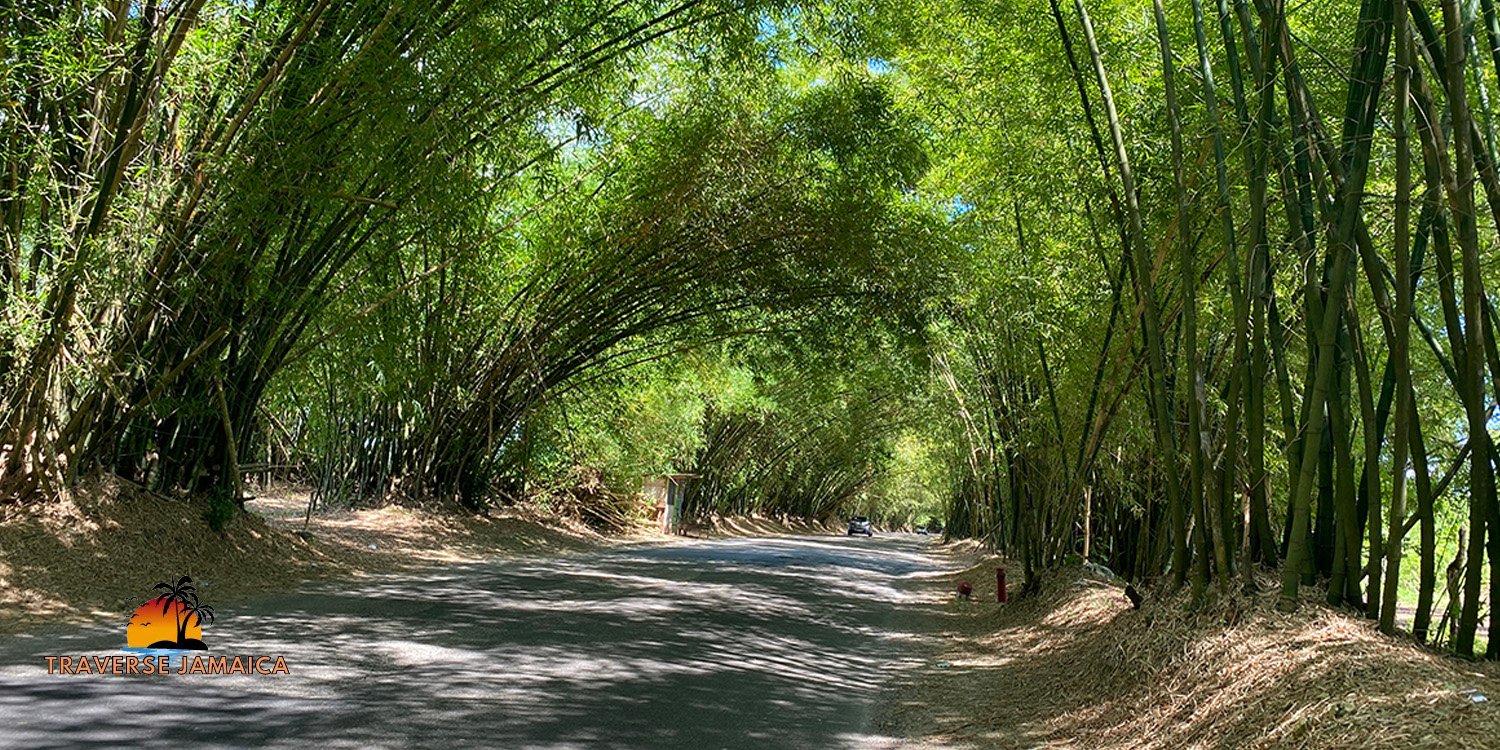Holland Bamboo, also known as Bamboo Avenue, is a majestic and iconic landmark located in the southern parish of St. Elizabeth, Jamaica. This two-and-a-half-mile stretch of road, lined with towering bamboo trees that form a natural tunnel, is one of the most scenic drives in the Caribbean. It has become a beloved spot for locals and tourists alike, capturing the essence of Jamaica’s natural beauty and rural charm. However, beyond its breathtaking aesthetics, Holland Bamboo is steeped in history, culture, and environmental significance.
This article explores the origins of Holland Bamboo, its historical context, how it got its name, and why it remains an important cultural and environmental landmark in Jamaica.
The Historical Background of Holland Bamboo
Holland Bamboo’s history is deeply intertwined with the island’s colonial past. The area gets its name from the Holland Estate, a large sugar plantation that once dominated the landscape during Jamaica’s era of sugar production in the 17th and 18th centuries. The estate, like many others during this time, relied heavily on enslaved Africans to cultivate sugarcane, which was a key export for Jamaica during its colonial period under British rule.
The road itself was constructed as a part of the estate’s infrastructure, linking the plantation to nearby communities and the seaport, which facilitated the movement of goods and services. The importance of sugar to the region’s economy at the time meant that estates like Holland played a central role in shaping the layout and infrastructure of rural Jamaica.
As Jamaica transitioned through post-emancipation and into modern times, the sugar plantations began to decline. However, the legacy of Holland Estate and its surrounding areas remained, and part of that legacy is the road that became known as Holland Bamboo.
How Holland Bamboo Got Its Name
The bamboo trees that line the road today were not originally part of the natural landscape. According to local historical accounts, they were planted in the early 20th century to provide shade and cooling relief for travelers using the road. St. Elizabeth is known for its warm, arid climate, especially in the lower plains, and the bamboo served as a cooling canopy over the road, making journeys more pleasant.
It is said that the estate managers initially brought in bamboo from East Asia, recognizing the tree’s fast-growing nature and its resilience. The bamboo thrived in Jamaica’s tropical climate, quickly spreading and growing tall, creating the famous natural tunnel we see today.
Over time, this unique bamboo avenue became synonymous with the Holland Estate and the surrounding region. Travelers began referring to the area as Holland Bamboo, a name that has persisted for over a century.
The Environmental Importance of Bamboo Avenue
Beyond its historical and aesthetic value, Holland Bamboo holds significant environmental importance. Bamboo is a remarkable plant species known for its sustainability and ability to regenerate quickly. It is one of the fastest-growing plants on earth, making it ideal for conservation purposes.
The bamboo that lines Bamboo Avenue has played a key role in preventing soil erosion along this stretch of road, particularly during the rainy seasons. The thick roots of the bamboo hold the soil together, preventing landslides and runoff that could damage the infrastructure. The dense foliage also serves as a natural windbreak, shielding the road from strong winds and the hot sun.
In recent years, environmentalists have highlighted the importance of preserving areas like Holland Bamboo, not just for their beauty but for their role in protecting local ecosystems. Bamboo provides habitats for small animals, birds, and insects, fostering biodiversity in the area.
Holland Bamboo as a Cultural Icon
Holland Bamboo has transcended its original function as a road to become a cultural icon in Jamaica. The natural tunnel of bamboo trees has been featured in numerous postcards, tourist brochures, and promotional materials for Jamaica, symbolizing the island’s natural beauty and rich heritage.
Over the decades, it has become a favorite stop for photographers, wedding parties, and tourists eager to capture the stunning landscape. The road has also been featured in several films and music videos, further cementing its status as one of Jamaica’s most recognizable landmarks.
For the local community, Holland Bamboo is not just a tourist attraction but a source of pride. It represents a link to Jamaica’s past, while also embodying the natural resilience and beauty of the island. The road is frequently used by locals going about their daily lives, whether commuting to work or transporting goods between communities.
Threats and Conservation Efforts
While Holland Bamboo remains a beloved part of Jamaica’s landscape, it has not been immune to threats. In recent years, concerns have been raised about the degradation of the bamboo, with some sections of the avenue becoming sparse due to human activity, including illegal cutting and encroachment.
The rapid development in surrounding areas, combined with natural wear and tear from storms, has led to calls for increased conservation efforts to protect Bamboo Avenue. There are ongoing efforts by environmental organizations and local authorities to replant bamboo and restore sections of the road that have been damaged. These initiatives are focused on both maintaining the avenue’s historical legacy and ensuring that it remains a sustainable feature of the landscape for generations to come.
Local residents and government authorities have also been working together to raise awareness about the importance of preserving Holland Bamboo, implementing stricter regulations on cutting and deforestation in the area. Educational programs are being developed to inform the public about the environmental significance of the bamboo and the need for responsible stewardship of the natural environment.
Holland Bamboo in Modern Jamaica
Today, Holland Bamboo continues to draw visitors from all over the world, many of whom are eager to experience one of the most beautiful and tranquil stretches of road in the Caribbean. It has become a popular stop on eco-tours, where visitors can learn about the history of the plantation era, the environmental benefits of bamboo, and the importance of conservation.
The road itself has seen some modernization, but the overarching goal has been to preserve the natural beauty of the bamboo canopy. This balance between maintaining the road’s practical use and preserving its aesthetic and historical significance remains a key focus for local authorities.
Conclusion
Holland Bamboo, with its stunning natural beauty and rich history, stands as one of Jamaica’s most cherished landmarks. From its origins as part of a colonial estate’s infrastructure to its evolution into a cultural and environmental icon, Holland Bamboo represents the intersection of history, nature, and community.
As Jamaica continues to grow and develop, the preservation of landmarks like Holland Bamboo remains crucial, not only for their beauty but for their role in telling the story of the island’s past. Holland Bamboo is more than just a road lined with trees; it is a living testament to Jamaica’s heritage and a reminder of the importance of protecting the natural world.









